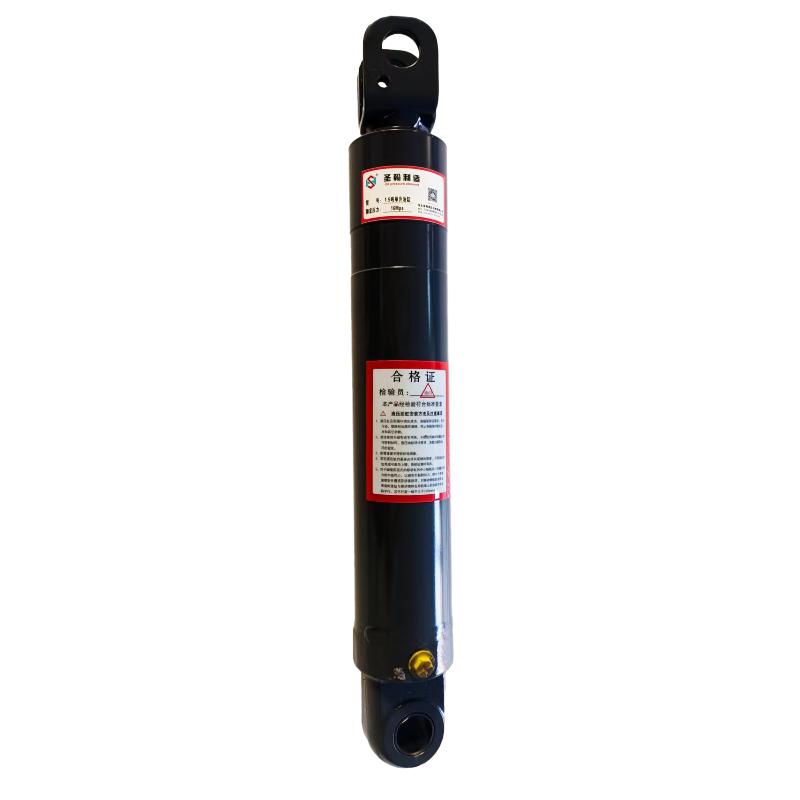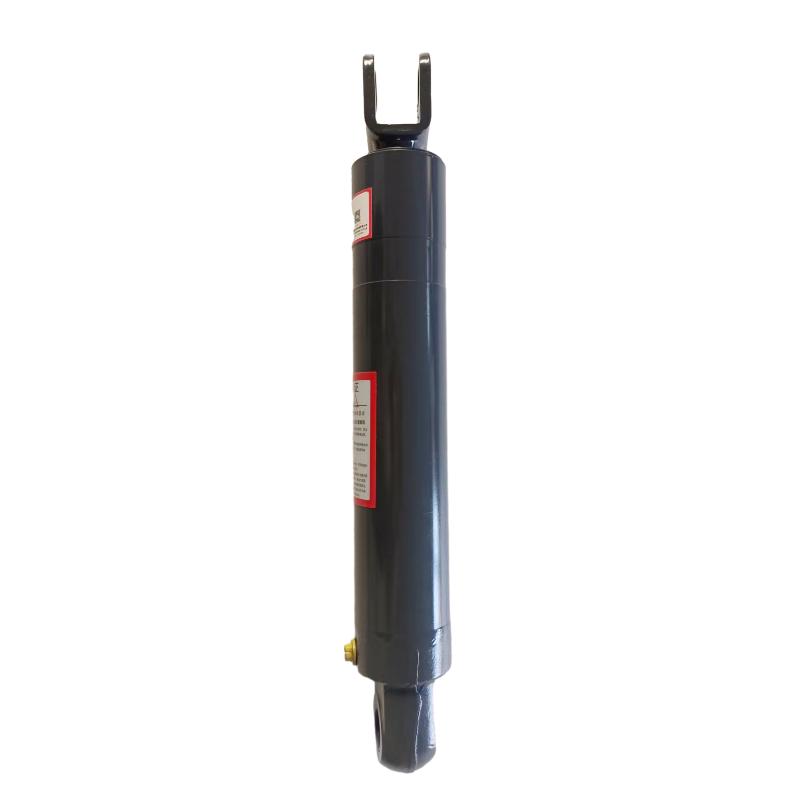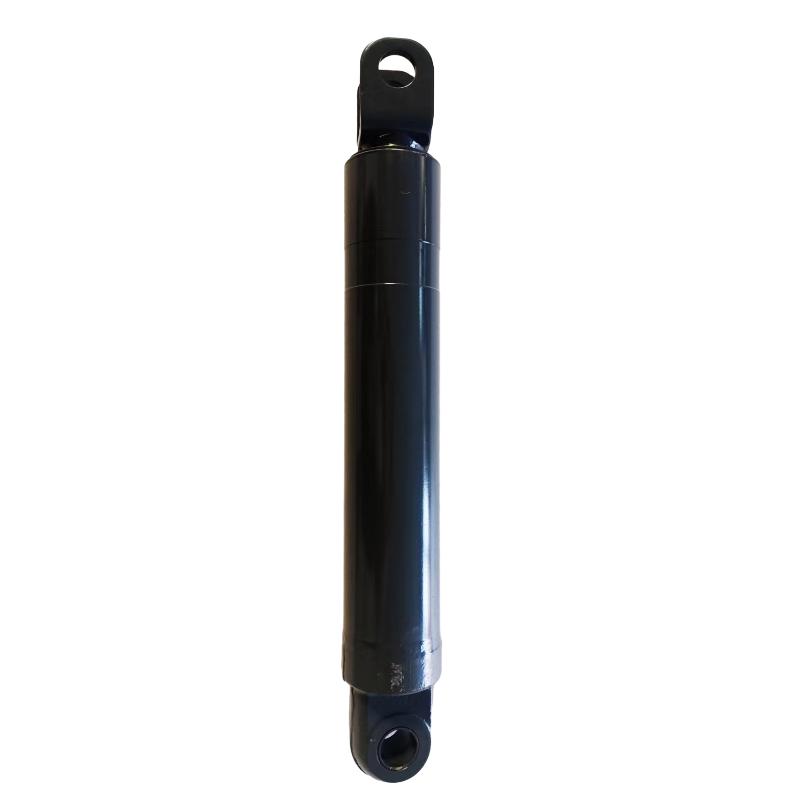Avg . 15, 2025 01:20 Back to list
1.5 Ton Lifting Cylinder 70/82-40-290-535 - Heavy Duty
Unlocking Potential: The Role of 1.5 Ton Lifting Cylinders in Modern Industry
In the realm of industrial automation and heavy machinery, precision lifting capabilities are paramount. Hydraulic lifting cylinders serve as the backbone for countless applications, offering robust power and controlled movement. Among these, the 1.5 ton lifting cylinder 70/82-40-290-535 stands out as a critical component, engineered for specific demanding tasks. This particular specification denotes a high-performance hydraulic cylinder designed to handle loads up to 1.5 metric tons, making it ideal for a diverse range of lifting, pushing, and pulling operations where controlled force and precise positioning are essential. Its compact yet powerful design makes it suitable for integration into various types of machinery, from mobile equipment to fixed industrial systems, ensuring operational efficiency and safety across the board.
Understanding the intricate details of such a specialized component is crucial for engineers, procurement managers, and technical specialists. This article delves into the core aspects of this specific hydraulic cylinder, exploring its technical prowess, advanced manufacturing processes, and widespread applications. We aim to provide a comprehensive overview that highlights its value proposition in demanding industrial environments, emphasizing its contribution to enhanced productivity, reduced operational costs, and improved safety standards. The unique blend of capacity, dimensional precision, and material integrity defines its superior performance in comparison to standard alternatives available in the market.
Industry Trends and Market Demand for Lifting Solutions
The global market for hydraulic components is experiencing steady growth, driven by increasing industrial automation, infrastructure development, and demand for efficient material handling solutions. Reports indicate that the hydraulic cylinder market is projected to reach approximately $19.5 billion by 2027, with a compound annual growth rate (CAGR) of around 4.5% from 2022 to 2027. This growth is significantly influenced by sectors such as construction, agriculture, mining, and manufacturing, all of which heavily rely on robust and reliable lifting mechanisms. End-users are increasingly demanding cylinders that offer not only higher load capacities but also enhanced durability, energy efficiency, and lower maintenance requirements.
Current industry trends highlight a shift towards more compact, high-pressure cylinders capable of delivering substantial force within confined spaces. There's also a growing emphasis on smart hydraulics, incorporating sensors and control systems for predictive maintenance and optimized performance. The demand for specialized cylinders like the 1.5 ton lifting cylinder 70/82-40-290-535 is a direct reflection of this trend, as industries seek tailored solutions that fit precise dimensional and operational needs. Furthermore, the focus on environmental sustainability is pushing manufacturers to develop more energy-efficient hydraulic systems and to utilize materials with improved corrosion resistance, particularly for applications in harsh environments such as petrochemical and wastewater treatment plants.
Technical Specifications: The 1.5 ton lifting cylinder 70/82-40-290-535
The specific designation of this hydraulic cylinder provides crucial insights into its design and performance capabilities. The "1.5 ton" refers to its nominal lifting capacity, ensuring it can safely manage loads up to 1500 kg. The subsequent numbers, "70/82-40-290-535," detail its critical dimensions and stroke. Specifically, '70' likely indicates a bore diameter of 70mm, which determines the pushing force generated by the cylinder. '82' could represent the outer diameter of the cylinder body or a specific mounting dimension. The '40' typically signifies a piston rod diameter of 40mm, providing the necessary strength and rigidity for heavy lifting applications. The '290' denotes the stroke length in millimeters, indicating the maximum extension of the rod, while '535' is typically the retracted length or closed center distance (CCD) of the cylinder, crucial for integration into specific machinery.
These parameters are fundamental for engineers designing new systems or replacing existing components. The precise combination of bore, rod, stroke, and retracted length makes this a highly specialized and efficient unit. Below is a detailed table summarizing the typical technical parameters for a high-quality 1.5 ton lifting cylinder 70/82-40-290-535, based on industry standards and common engineering practices. These specifications underline the cylinder's suitability for applications requiring both significant force and constrained spatial integration.
| Parameter | Specification | Unit/Description |
|---|---|---|
| Nominal Lifting Capacity | 1.5 | Ton (1500 kg) |
| Bore Diameter | 70 | mm |
| Piston Rod Diameter | 40 | mm |
| Stroke Length | 290 | mm |
| Retracted Length (CCD) | 535 | mm |
| Operating Pressure (Max) | 210-250 | Bar (approx. 3000-3600 PSI) |
| Operating Temperature | -20 to +80 | °C |
| Material (Cylinder Tube) | ST52, E355, 20# seamless steel tube | High-strength carbon steel |
| Material (Piston Rod) | 45# steel, induction hardened, hard chrome plated | Enhanced durability and corrosion resistance |
| Seal Material | Nitrile Rubber (NBR), Polyurethane (PU) | Designed for optimal sealing and longevity |
| Mounting Type | Pin eye, Trunnion, Flange (customizable) | Versatile integration options |

Advanced Manufacturing Process for Superior Performance
The production of a high-quality 1.5 ton lifting cylinder 70/82-40-290-535 involves a rigorous multi-stage manufacturing process, ensuring precision, durability, and reliability. It begins with meticulous material selection. For instance, cylinder barrels are typically crafted from high-strength seamless steel tubes such as ST52 or E355, renowned for their superior yield strength and machinability. Piston rods are commonly made from 45# steel, which undergoes induction hardening for increased surface hardness and wear resistance, followed by hard chrome plating. This chrome layer, usually 20-30 microns thick, provides exceptional corrosion resistance and a low-friction surface, significantly extending the cylinder's service life, particularly in abrasive or corrosive environments like those found in the petrochemical or mining industries.
The manufacturing workflow incorporates state-of-the-art techniques. After initial cutting, cylinder tubes undergo deep-hole honing, a precision machining process that creates a smooth, consistent internal bore, crucial for optimal seal performance and reduced friction. Components like pistons, glands, and rod eyes are precisely machined using CNC (Computer Numerical Control) equipment, ensuring tight tolerances and perfect fit. Welding processes, such as robotic MIG/MAG welding, are employed for robust assembly, particularly for end caps and mounting points. Post-welding, heat treatment may be applied to relieve stress. Each cylinder then undergoes stringent quality control, including pressure testing (proof pressure and functional tests), leakage tests, and dimensional inspections, adhering to international standards such as ISO 10100, ANSI B93.1, and CE directives. This comprehensive approach guarantees a product that meets exacting performance standards and offers a projected service life of typically 5-10 years under normal operating conditions.
Key Technical Advantages and Performance Benchmarks
The design and construction of the 1.5 ton lifting cylinder 70/82-40-290-535 confer several distinct technical advantages. Its robust material selection and precision manufacturing lead to exceptional durability, enabling it to withstand high operating pressures and repetitive cycles without premature failure. The hard chrome-plated piston rod provides superior resistance to wear and corrosion, making it particularly effective in challenging environments, such as those exposed to chemicals or high humidity in water treatment plants. This anti-corrosion property significantly reduces maintenance downtime and replacement costs, offering a lower total cost of ownership over its operational lifespan.
Furthermore, the optimized internal design, including high-quality seals and precision-honed bore, ensures minimal internal leakage and maximum hydraulic efficiency. This translates into energy savings, as less power is wasted due to fluid bypass, a critical factor in large-scale industrial operations where energy consumption directly impacts profitability. The precise stroke control and smooth operation of this cylinder contribute to enhanced system accuracy and safety, which is vital in applications requiring delicate positioning or controlled speed. For instance, in automated assembly lines, the consistent performance of this cylinder ensures repeatable motion, reducing errors and improving overall production quality.

Application Scenarios and Illustrative Case Studies
The versatility of the 1.5 ton lifting cylinder 70/82-40-290-535 makes it indispensable across numerous industrial sectors. Its lifting capacity and precise dimensions render it ideal for material handling equipment such as small scissor lifts, portable cranes, and specialized conveyor systems in manufacturing plants. In the petrochemical industry, these cylinders are often deployed in valve actuation systems or emergency shut-off mechanisms, where their corrosion resistance and reliability are critical for safety and operational continuity, especially in hazardous environments. Their ability to deliver consistent force in confined spaces makes them perfect for operating dam gates in water conservancy projects or controlling flow in municipal water and wastewater treatment facilities, where their anti-corrosion properties are highly valued.
Consider a practical case study in the metallurgy sector: a small-scale rolling mill utilizes several of these cylinders for precise roll gap adjustment, critical for achieving specific material thickness. The high accuracy and repeatable positioning capability of the cylinder directly contribute to product quality and waste reduction. Another example is in agricultural machinery, where these cylinders power the lifting and tilting functions of compact loaders or specialized harvesting equipment, allowing for efficient field operations. Client feedback consistently highlights the cylinder's long service life and minimal need for preventative maintenance, translating into significant operational savings and reduced downtime for equipment. These real-world applications underscore the cylinder's robust performance and adaptability to diverse, demanding industrial challenges.
Customization Solutions and Manufacturer Considerations
While the standard 1.5 ton lifting cylinder 70/82-40-290-535 offers broad applicability, many industrial applications necessitate customized solutions. Reputable manufacturers recognize this need and offer extensive customization options to meet specific operational requirements. These may include variations in mounting styles (e.g., clevis, trunnion, flange, spherical bearing), specialized porting arrangements, integrated sensors for position feedback, or alternative sealing materials for extreme temperatures or chemical compatibility. Surface treatments can also be tailored, such as nickel-chrome plating for enhanced corrosion resistance in marine environments, or specific paint coatings for aesthetic or additional protective purposes.
When selecting a manufacturer for a 1.5 ton lifting cylinder 70/82-40-290-535, several factors should be considered beyond just price. Authoritativeness is key: look for suppliers with ISO 9001 certification, demonstrating a commitment to quality management systems. Companies with extensive service tenure and a track record of successful projects in relevant industries, along with partnerships with major original equipment manufacturers (OEMs), indicate high levels of experience and trustworthiness. Furthermore, a manufacturer's ability to provide comprehensive testing data, performance curves, and detailed engineering support is vital. For example, a supplier who can demonstrate the cylinder's fatigue life based on cyclical testing (e.g., 2 million cycles at full load) provides a transparent assurance of product longevity, crucial for long-term investment planning.

Frequently Asked Questions (FAQs)
Q: What is the typical service life of a 1.5 ton lifting cylinder 70/82-40-290-535?
A: Under normal operating conditions and with proper maintenance, a high-quality 1.5 ton lifting cylinder 70/82-40-290-535 is designed for a service life of 5 to 10 years, often exceeding this depending on application severity and frequency of use. Regular fluid checks and seal replacements can significantly extend its operational longevity.
Q: How does this cylinder perform in corrosive environments?
A: With its hard chrome-plated piston rod and potential for customized anti-corrosion coatings, the 1.5 ton lifting cylinder 70/82-40-290-535 offers excellent resistance to corrosion, making it suitable for demanding applications in petrochemical, marine, and wastewater treatment industries. Specific material certifications for corrosion resistance should be requested for highly aggressive environments.
Q: Are custom mounting options available for this cylinder?
A: Yes, leading manufacturers typically offer a wide range of customization for mounting types, including pin eye, trunnion, flange mounts, and custom designs to ensure seamless integration into existing machinery or new designs. Consult with the manufacturer's engineering team for specific requirements.
Delivery, Warranty, and Customer Support
Reliable delivery and comprehensive after-sales support are crucial factors in the procurement of industrial hydraulic components. For standard models of the 1.5 ton lifting cylinder 70/82-40-290-535, typical delivery cycles range from 4 to 6 weeks, depending on stock availability and order volume. Customized cylinders may require a longer lead time, generally between 8 to 12 weeks, to accommodate design, material sourcing, and specialized manufacturing processes. Reputable suppliers provide clear communication regarding production schedules and logistics, often offering expedited shipping options for urgent requirements.
In terms of trustworthiness, a robust warranty policy is a hallmark of quality. Most industry-leading manufacturers offer a minimum 12 to 24-month warranty on their hydraulic cylinders, covering defects in materials and workmanship. This commitment provides peace of mind and reflects confidence in the product's durability. Comprehensive customer support includes dedicated technical assistance for installation, troubleshooting, and maintenance guidance. Many manufacturers also offer access to spare parts, repair services, and even training programs to ensure the optimal performance and longevity of the 1.5 ton lifting cylinder 70/82-40-290-535 throughout its operational life.
References
- ISO 10100: Hydraulic fluid power - Cylinders - Acceptance tests.
- ANSI B93.1: Fluid power systems and components - Hydraulic cylinders - Standard dimensions and identification code.
- Hydraulic Cylinder Market Size, Share & Trends Analysis Report.
- Handbook of Hydraulic Fluid Power, Marcel Dekker Inc.
-
1.5 Ton Lifting Cylinder 70/82-40-290-535 - Hebei Shenghan Hydraulic Machinery Co., Ltd.|Industrial Lifting, Customizable Design
NewsAug.15,2025
-
1.5 Ton Lifting Cylinder 70/82-40-290-535 - Hebei Shenghan | Precision Hydraulic Solutions
NewsAug.15,2025
-
1.5 Ton Lifting Cylinder 70/82-40-290-535 - Heavy Duty
NewsAug.15,2025
-
1.5 Ton Lifting Cylinder 70/82-40-290-535-Hebei Shenghan Hydraulic Machinery Co., Ltd.|High Load Capacity&Customization
NewsAug.15,2025
-
1.5 Ton Lifting Cylinder 70/82-40-290-535-Hebei Shenghan Hydraulic Machinery Co., Ltd.
NewsAug.14,2025
-
1.5 Ton Lifting Cylinder 70/82-40-290-535 - Hebei Shenghan|Hydraulic Solutions, Customization
NewsAug.14,2025
